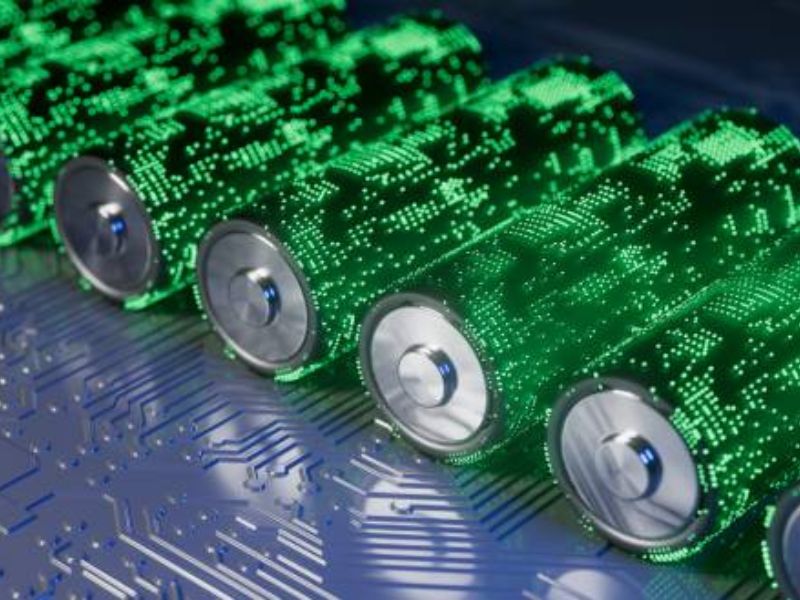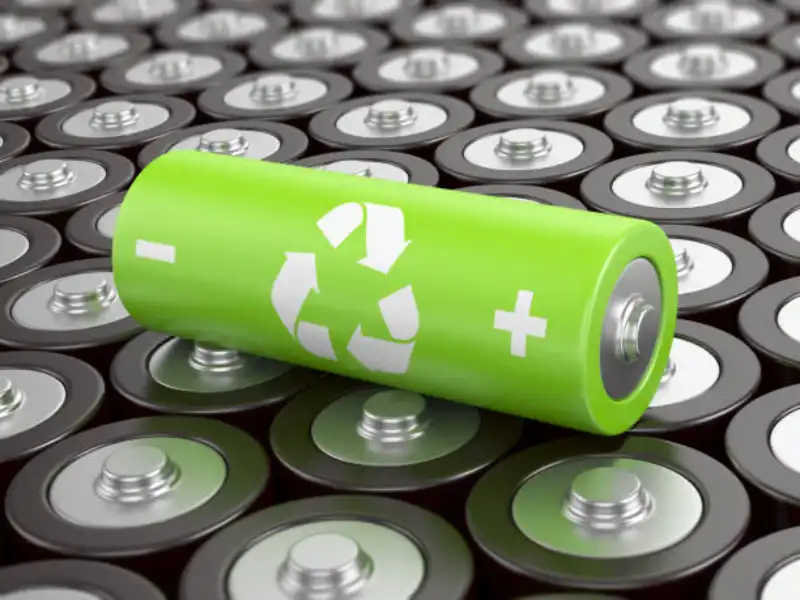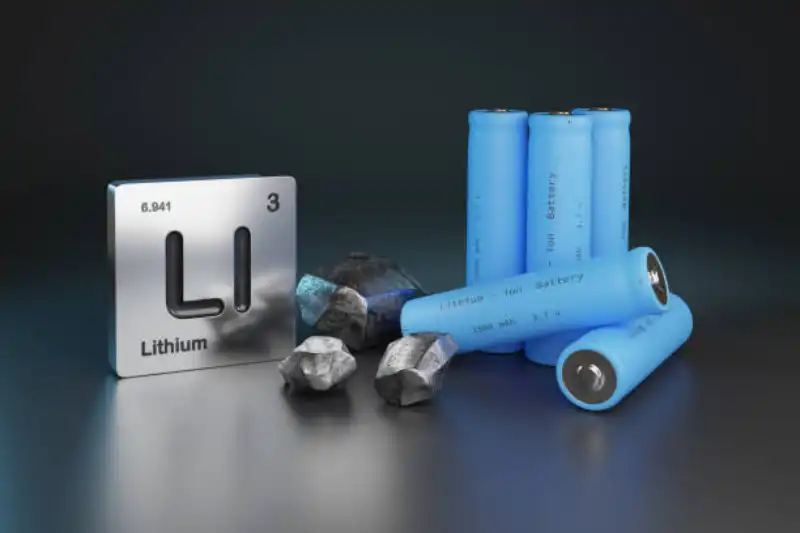What Is Energy Density?
Energy density is a critical concept in understanding the performance of batteries. It refers to the amount of energy that a battery can store per unit mass or volume. Often measured in kilowatt-hours per kilogram (kWh/kg) or watt-hours per liter (Wh/L), energy density provides insight into the storage capacity of batteries in applications ranging from RVs, marine equipment, to home or commercial energy storage systems. A higher energy density denotes that a given mass or volume of a battery can store more energy.

For instance, lithium batteries, a popular choice in the field of electric vehicles, are known for their high energy density (Learn: Why You Need a Lithium Battery for Caravan?). This is why they are capable of providing a lot of energy over a prolonged duration, making them ideal for applications that require long-term power, such as running an RV’s appliances or powering a home during a blackout. However, energy density should not be confused with power density, which serves a different yet equally critical role in battery performance.
What Is Power Density?
Power density, on the other hand, is about how fast a battery can deliver energy. It refers to the maximum amount of energy that can be discharged per battery unit in a given unit of time, often measured in watts per kilogram (W/kg). Batteries with a high power density are able to release a lot of energy quickly.
A high power density is crucial for applications that demand high power output in short bursts. Take marine equipment, for example, which may require an immediate surge of energy for starting an engine. Similarly, in the context of electric vehicles, batteries need to have a higher power density to support fast acceleration or climbing steep hills. However, it’s essential to note that a higher power density often comes at the cost of energy density, leading to a delicate balance in battery design.
How Energy Density and Power Density Relate?
Energy density and power density are intertwined characteristics of a battery that significantly influence its performance. While energy density measures how much energy a battery can store, power density determines how fast the stored energy can be released.
In practice, batteries with a high energy density can store a lot of energy but may not deliver it rapidly. Conversely, those with a high power density can deliver energy quickly but may not hold as much. Hence, the “energy density vs power density” dynamic is a key factor in designing and selecting batteries for specific uses, such as those for RVs, marine, vehicles, home, or commercial energy storage systems.

Energy Density vs Power Density in Batteries
In terms of energy density vs power density, batteries tend to fall somewhere on a spectrum between these two extremes. For example, a battery designed for an RV or home energy storage system may prioritize energy density over power (learn: Complete Guide to Off Grid Power System Solution) density because these applications require a steady supply of power over a long period. In contrast, a battery for an electric vehicle or marine equipment might require a balance of both high energy and power density to support quick bursts of power for acceleration or high-load tasks while still ensuring a reasonable range or operation time.
Here is a list of various battery types along with their average power and energy densities. Please note these are approximate values and can vary depending on the specific model and design of the battery.
| Battery Type | Energy Density (Wh/kg) | Power Density (W/kg) |
| Lead Acid | 30 – 40 | 180 – 300 |
| Nickel Cadmium | 40 – 60 | 150 – 200 |
| Nickel Metal Hydride | 60 – 120 | 250 – 1000 |
| Lithium Ion | 100 – 265 | 250 – 340 |
| Lithium Polymer | 100 – 130 | 300 – 6200 |
| Lithium Iron Phosphate | 90 – 120 | 1800 – 5000 |
| Lithium Titanate | 50 – 80 | 2000 – 7500 |
| Zinc-air | 100 – 200 | 100 – 300 |
| Alkaline | 80 – 100 | 60 – 200 |
| Sodium-sulfur | 150 – 250 | 150 – 200 |
The Balance Between Energy and Power Densities in Battery Technologies
Finding the right balance between energy density and power density in battery technologies is a technical challenge. High energy density is beneficial for providing continuous power, while high power density supports high-performance tasks. Therefore, engineers aim to design batteries with the maximum amount of energy per unit mass (energy density) and the highest possible power output per unit area (power density).
Various factors come into play in striking this balance, including the choice of battery chemistry, design of the battery’s internal structure, and the specific needs of the application. Lithium-ion batteries, for instance, have emerged as a preferred choice for many applications due to their high energy density and respectable power density.
Why High Energy Density Matter?
High energy density is important in applications where longevity of power is a priority. For instance, for powering an RV on a long trip, a battery with high energy density will provide a consistent source of energy over a more extended period, allowing you to use your appliances without frequent recharging. Similarly, in home energy storage, a battery with high energy density can store a substantial amount of solar or wind energy during the day to power your home at night.
High energy density can also reduce the weight and size of the battery, which is critical in applications like electric vehicles, where every kilogram counts towards overall vehicle efficiency. It allows a device to operate longer between charges, thereby increasing the practicality and convenience of the device.
Why High Power Density Matter?
High power density, on the other hand, is essential when there’s a need for a quick release of energy. For example, starting a boat’s motor, driving an electric car up a steep hill, or even operating certain power tools requires a battery with high power density.
Also, high power density allows the device to recharge quickly. If a battery can deliver a lot of energy quickly (high power density), it can often also absorb a lot of energy quickly. This fast recharge capability can be a significant advantage in electric vehicles or other devices that require frequent or rapid recharging.

What Are the Risks of High Energy Density and High Power Density?
While high energy density and high power density bring many benefits, they also come with their risks. Batteries with high energy density contain a lot of energy in a small space. If not managed properly, such as in the case of a short circuit or damage, this energy can be released in an uncontrolled manner, leading to overheating, fire, or even explosion.
Similarly, batteries with high power density can pose risks. They can deliver a lot of power quickly, and if a fault occurs, the sudden release of energy could also result in a fire or explosion. Hence, batteries designed with high energy density and high power density require robust safety mechanisms and careful handling.
Conclusion
Understanding the concepts of energy density and power density is crucial when it comes to selecting the right battery for a given application. High energy density is beneficial for long-lasting power, while high power density allows for quick bursts of energy. These two characteristics, however, often stand in a trade-off relationship, making the task of optimizing both a challenge in battery technology. From powering RVs and marine equipment to home and commercial energy storage, the delicate balance of energy density vs power density shapes the performance, efficiency, and safety of our energy solutions.
If you have any questions, please contact Polinovel.

